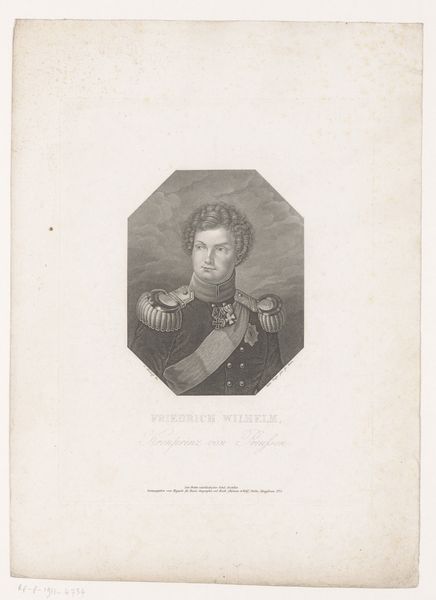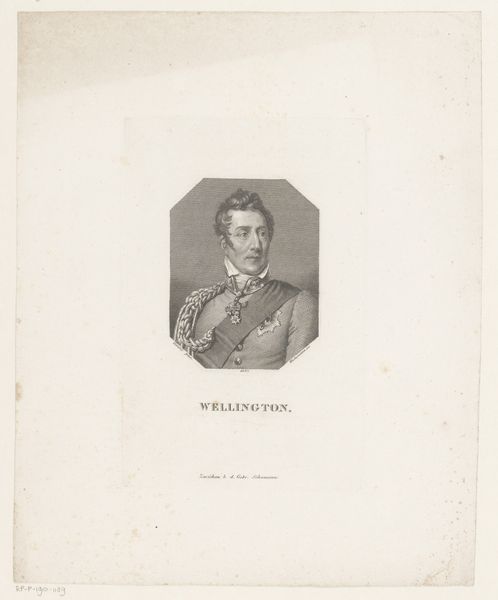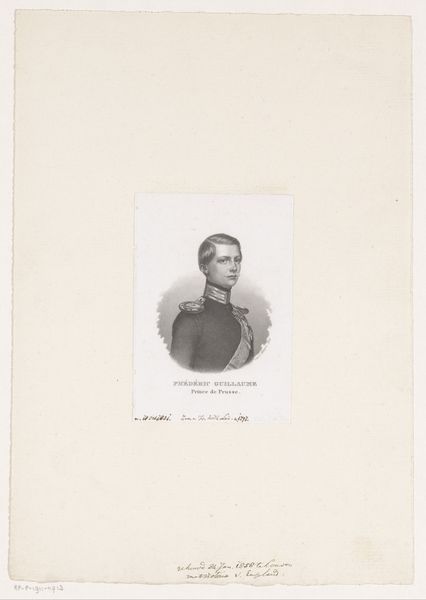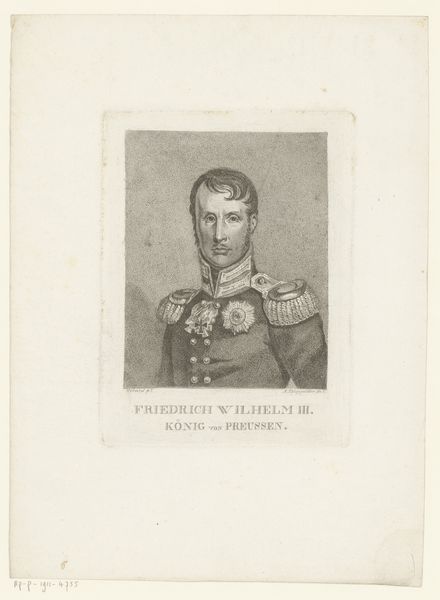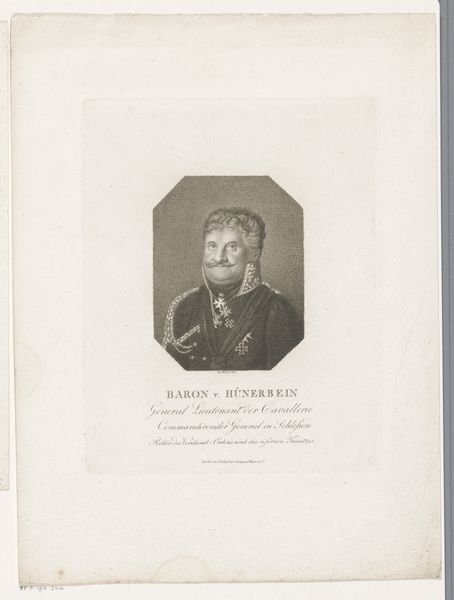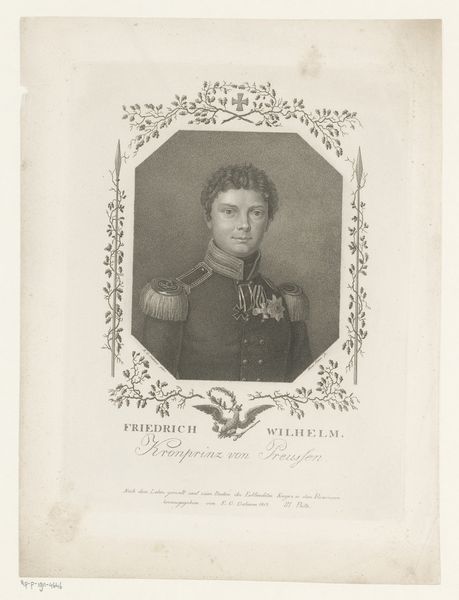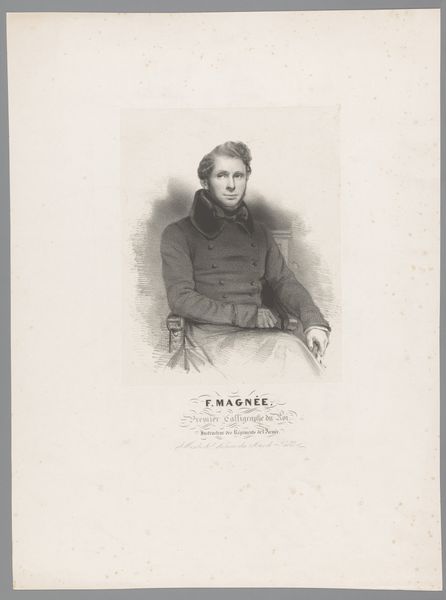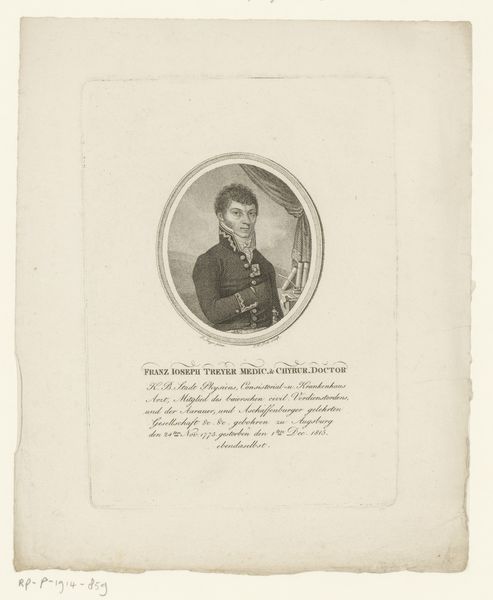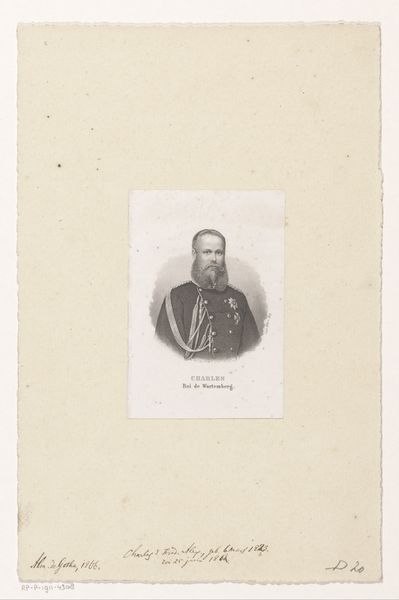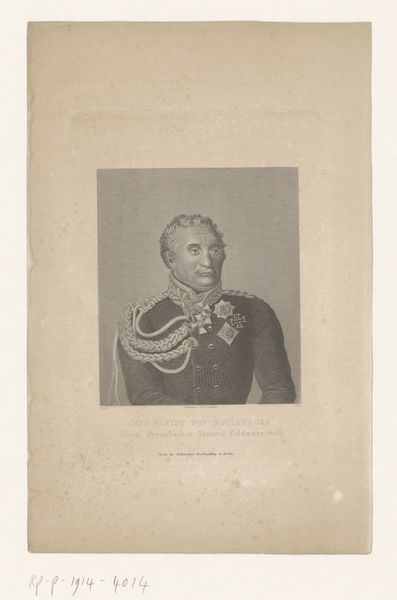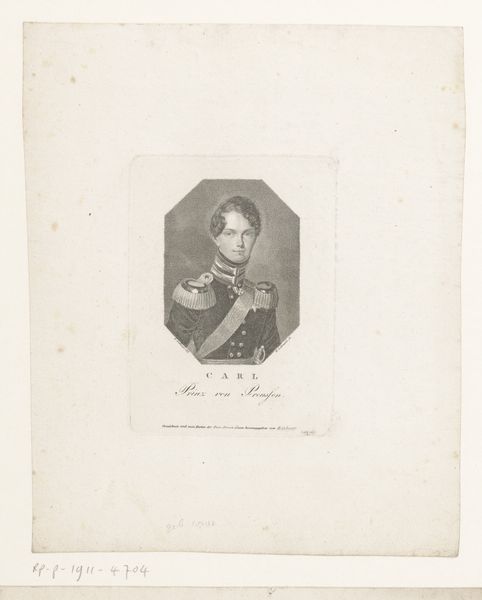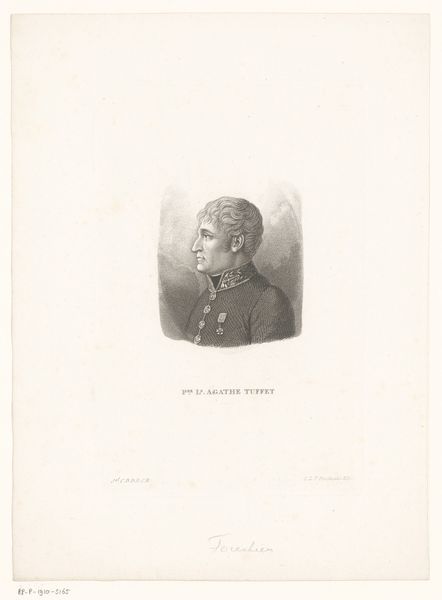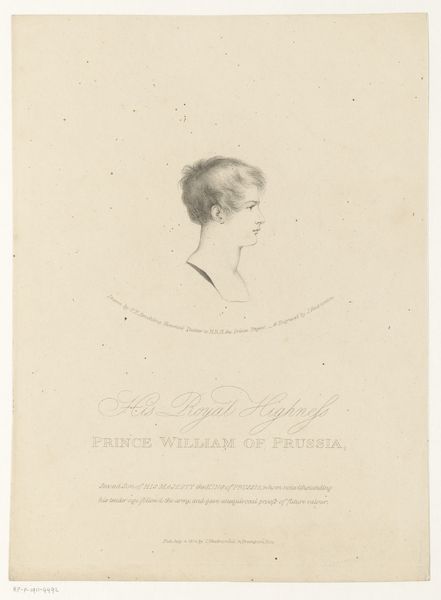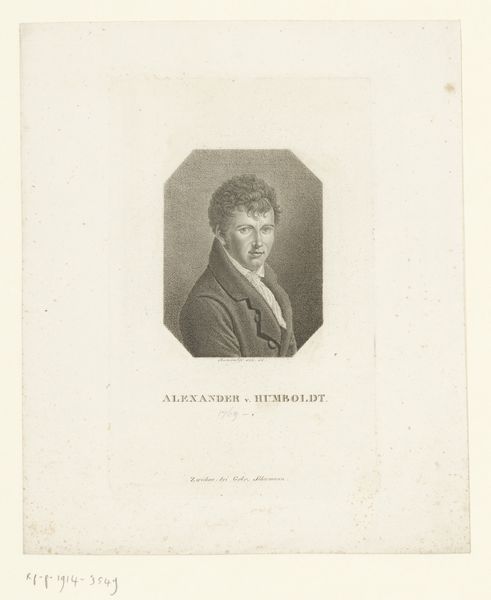
print, engraving
#
portrait
#
neoclacissism
# print
#
old engraving style
#
history-painting
#
academic-art
#
engraving
Dimensions: height 203 mm, width 174 mm
Copyright: Rijks Museum: Open Domain
Curator: Looking at this print, I immediately notice the geometric precision in the framing of the portrait. Editor: Indeed. We’re observing an engraving by Johann Friedrich Bolt, dating from 1817. It’s a portrayal of Friedrich Wilhelm III of Prussia. Curator: The formal restraint is striking. The use of line and shadow is meticulously controlled to construct the image of the king. Do you feel this careful calibration communicates an era, a position? Editor: Undoubtedly. It's steeped in the aesthetic and the socio-political environment of the time. Depictions of power were intentionally presented through very particular filters. Wilhelm III’s reign saw Prussia's rise. How do you perceive the king within the frame? Curator: Stolid and powerful. His gaze is assured, yet something in the way it's printed suggests a controlled, almost hesitant resolve. The detailing in the uniform—each button, braid, and medal—conveys not merely status, but a weighty history. But its grayscale rendering mutes something essential... Editor: It speaks to the democratization of imagery during that period. Engravings enabled wider distribution, reinforcing his presence across Prussian society. Did this shape or respond to public perception? The role of printing in shaping narratives of leadership intrigues me. Curator: The portrait's impact stems from its balance of light and shadow, coupled with the clarity of the engraving lines to lend gravity to his position within society. These formal features create visual symbolism. Editor: Seeing this print in the museum now offers a layered view—considering not only the sitter and artist, but also the role of images in asserting national identity during this time. What remains with you most strongly from the viewing? Curator: I will be considering the visual mechanisms the artist deployed to solidify Friedrich Wilhelm III's role through such structured graphic choices. Editor: And for me, thinking through how these circulated images influenced governance itself opens new considerations about visual narratives.
Comments
No comments
Be the first to comment and join the conversation on the ultimate creative platform.
